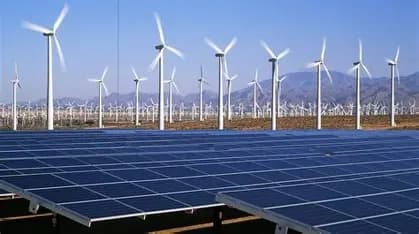
Growth in Renewable Energy
India has emerged as a global leader in renewable energy, particularly in solar, ranking third worldwide in 2024 for new capacity additions. This transition has made notable contributions to employment and GDP growth, showing robust sectoral momentum.
Climate Finance Gap
Despite progress, a substantial gap in climate finance threatens India’s ability to scale and sustain its clean energy ambitions. Estimates suggest the country will require between $1.5 trillion and $2.5 trillion by 2030 to meet its climate targets and national development goals. Current financial flows—though increasing—are still insufficient, especially in bringing investment to smaller players such as MSMEs and local infrastructure developers.
Financial Innovations and Policy Support
To address the shortfall, the document calls for innovative financial mechanisms:
• Expanding the use of green and social bonds, which already show strong private sector engagement.
• Leveraging blended finance, credit enhancements, partial guarantees, and risk-sharing tools to attract private and institutional capital.
• Encouraging public finance—through budgetary allocations and fiscal incentives—and regulatory changes to support long-term investment from domestic institutions such as pension and insurance funds.
Role of Carbon Markets and Technology
The establishment of transparent carbon markets is identified as critical for mobilizing additional funds. The document also advocates for using advanced technologies like blockchain and AI to improve finance tracking and risk assessment in green investments.
Conclusion
While India’s clean energy trajectory is strong and holds promise for inclusive, future-ready growth, its success hinges on dramatically scaling up climate finance and financial innovation. A diversified mix of policy reforms, innovative financial instruments, and institutional support is essential to bridge the gap and ensure the nation’s ability to meet its ambitious climate and economic targets.









